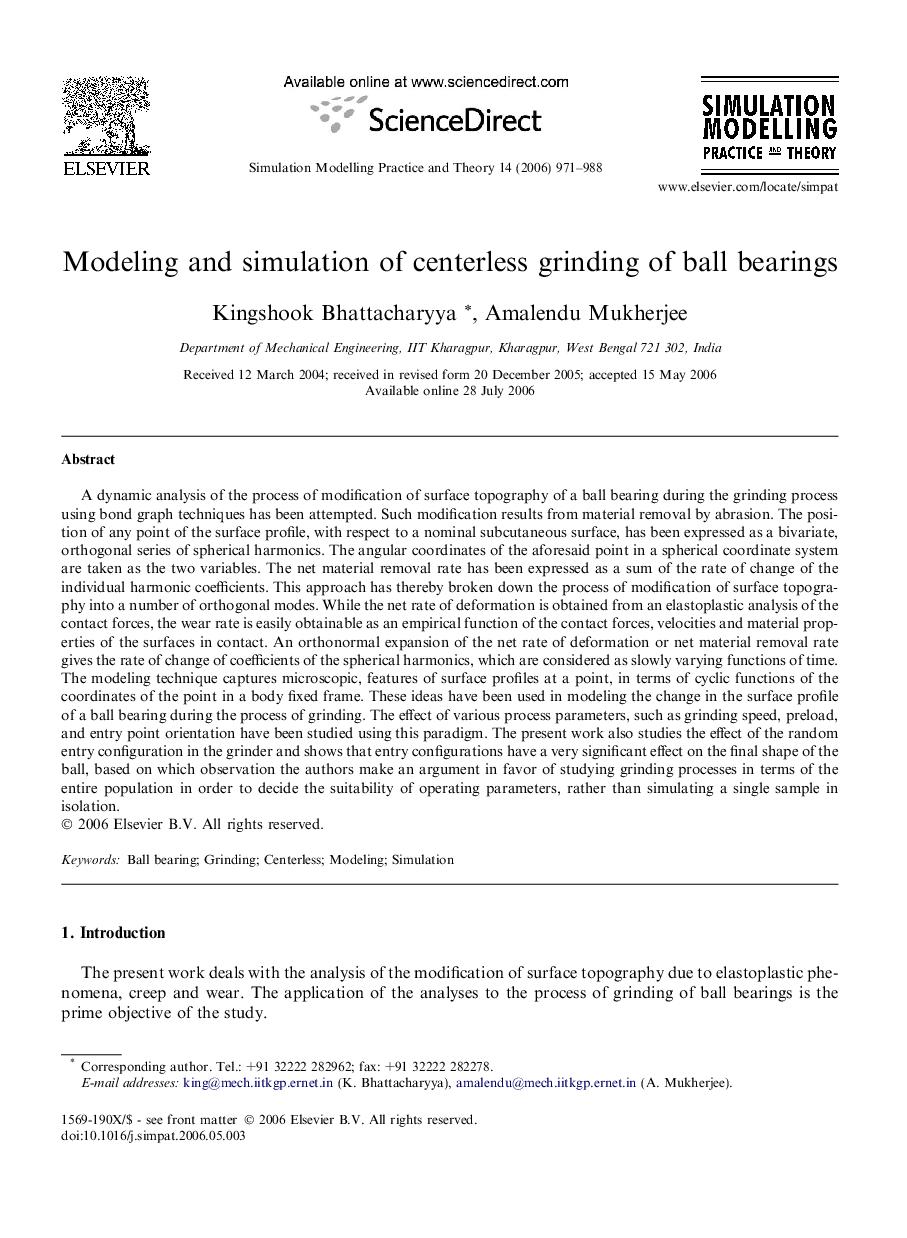| Article ID | Journal | Published Year | Pages | File Type |
|---|---|---|---|---|
| 493558 | Simulation Modelling Practice and Theory | 2006 | 18 Pages |
A dynamic analysis of the process of modification of surface topography of a ball bearing during the grinding process using bond graph techniques has been attempted. Such modification results from material removal by abrasion. The position of any point of the surface profile, with respect to a nominal subcutaneous surface, has been expressed as a bivariate, orthogonal series of spherical harmonics. The angular coordinates of the aforesaid point in a spherical coordinate system are taken as the two variables. The net material removal rate has been expressed as a sum of the rate of change of the individual harmonic coefficients. This approach has thereby broken down the process of modification of surface topography into a number of orthogonal modes. While the net rate of deformation is obtained from an elastoplastic analysis of the contact forces, the wear rate is easily obtainable as an empirical function of the contact forces, velocities and material properties of the surfaces in contact. An orthonormal expansion of the net rate of deformation or net material removal rate gives the rate of change of coefficients of the spherical harmonics, which are considered as slowly varying functions of time. The modeling technique captures microscopic, features of surface profiles at a point, in terms of cyclic functions of the coordinates of the point in a body fixed frame. These ideas have been used in modeling the change in the surface profile of a ball bearing during the process of grinding. The effect of various process parameters, such as grinding speed, preload, and entry point orientation have been studied using this paradigm. The present work also studies the effect of the random entry configuration in the grinder and shows that entry configurations have a very significant effect on the final shape of the ball, based on which observation the authors make an argument in favor of studying grinding processes in terms of the entire population in order to decide the suitability of operating parameters, rather than simulating a single sample in isolation.
